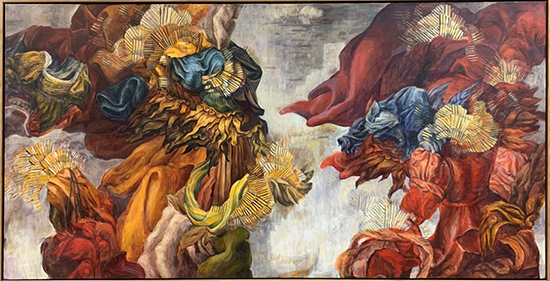Folds and Faults: An Exhibition of African Women Artists Examining Identity, Culture, and Heritage.

(Gwenneth Miller, Folds, Assumed abundance, 2019, Oil on canvas, 91,5 x 183 cm.)
The Johannes Stegmann gallery at the University of the Free State (UFS), in collaboration with Curate.A.Space, is proud to present Folds and Faults: An Exhibition of African Women Artists Examining Identity, Culture, and Heritage. The exhibition is a tribute to courageous women through the works of
an all-female artist group.
Carol Brown, Zinhle Khumalo from Curate.A.Space, and Angela de Jesus curated the exhibition, which will run virtually as well as at the Stegmann Gallery in the Sasol Library on the UFS Bloemfontein Campus.
Details:
18 August 2021-17 September 2021
Johannes Stegmann Art Gallery, Sasol Library,
University of the Free State.
“The theme of folds has many layers – as a fold itself implies. Fabric is what immediately comes to mind, but the action of folding can take too many levels. This exhibition explores these complexities.”
Background:
The exhibition features artworks by women artists in particular – a second generation of female artists whose mothers were part of the era when the historic 1956 Women’s March in Pretoria chanted the song, Wathint’ Abafazi, Wathint’
Imbokodo (You strike a woman, you strike a rock).
Looking back on those dark years of apartheid, we remember how women were disenfranchised and disempowered. There were only a few black female artists, and the protest art made at the time was mostly by men. The women were the caregivers who took care
of domestic issues and were the nurturers of the future generations whose work is now featured in this exhibition.